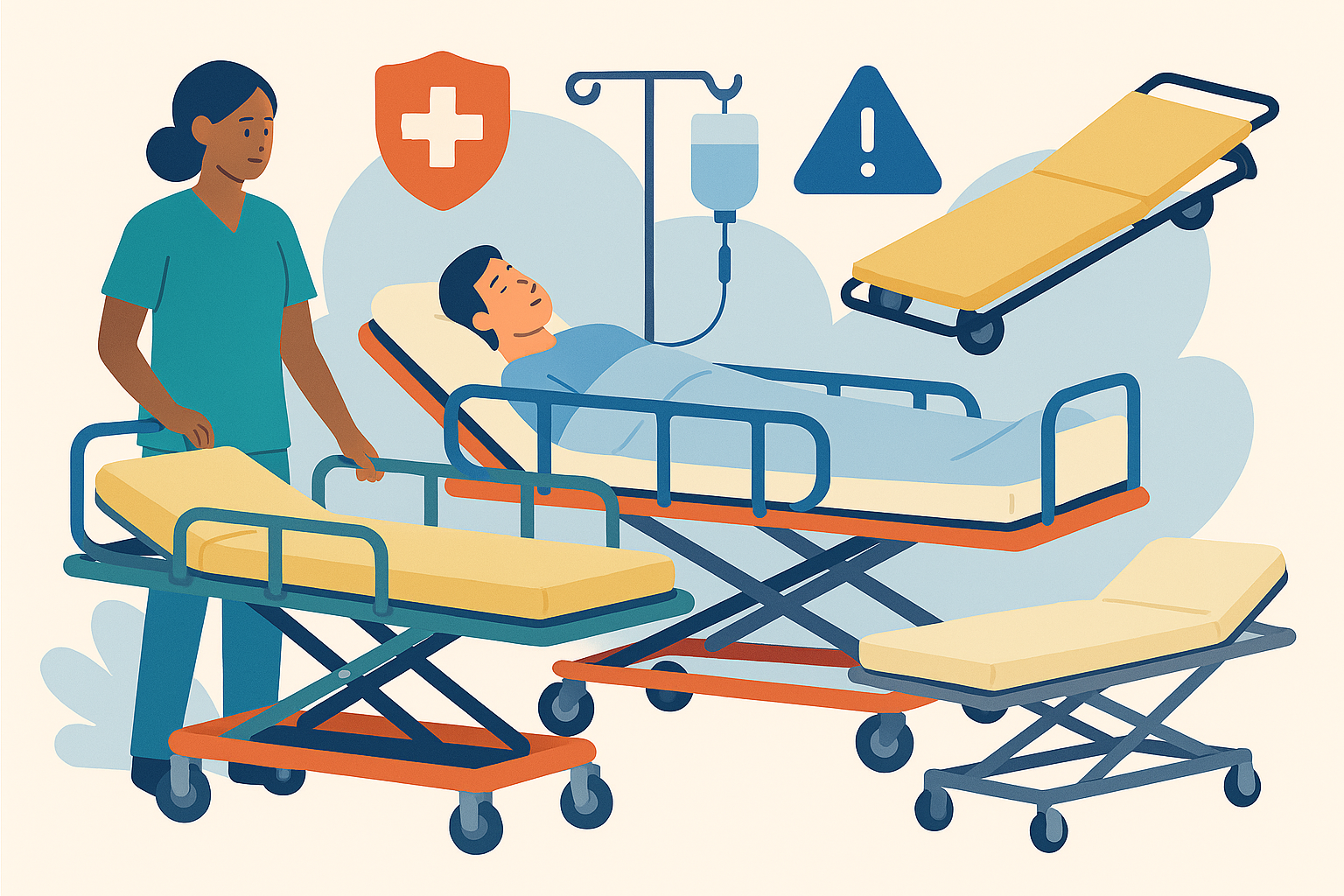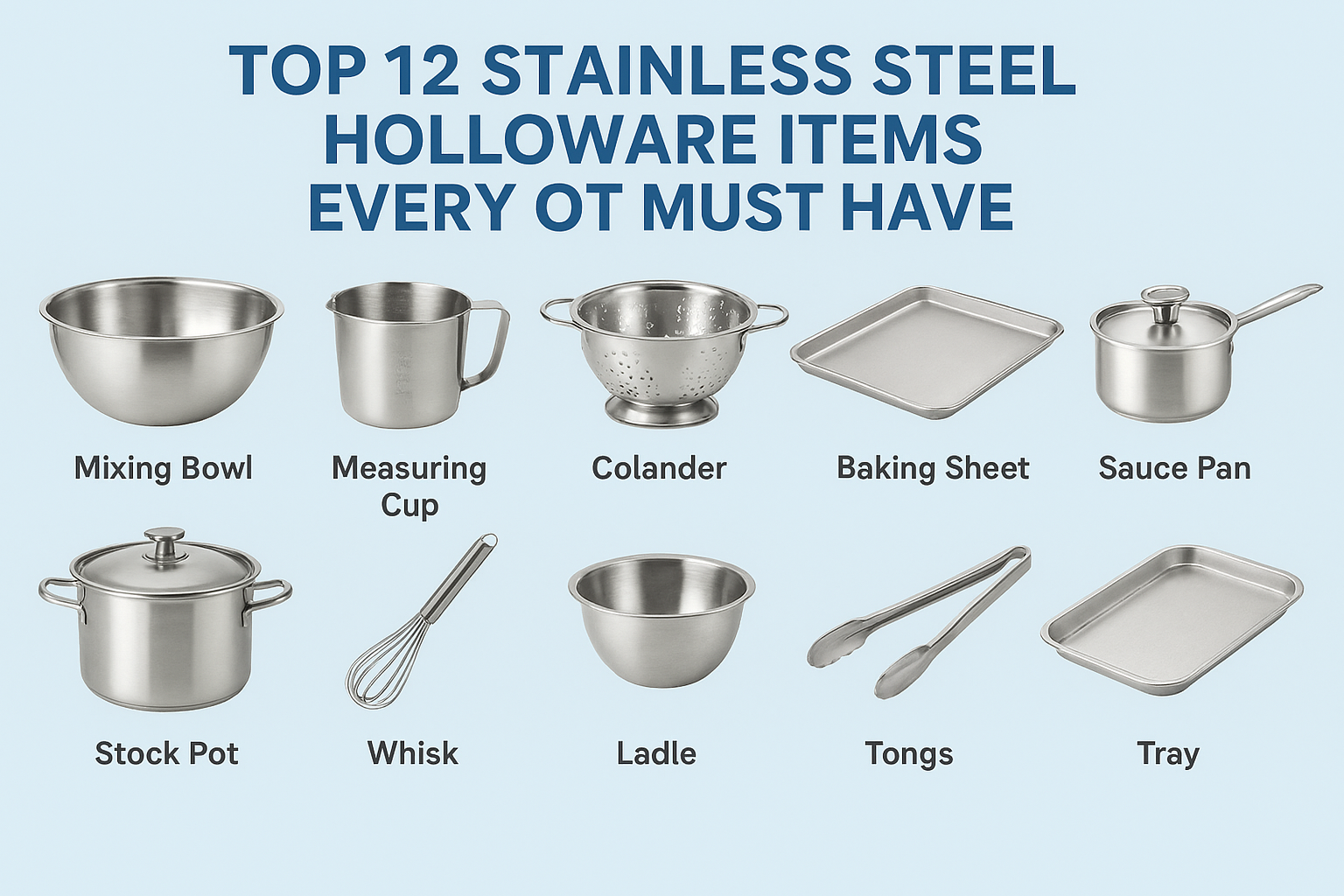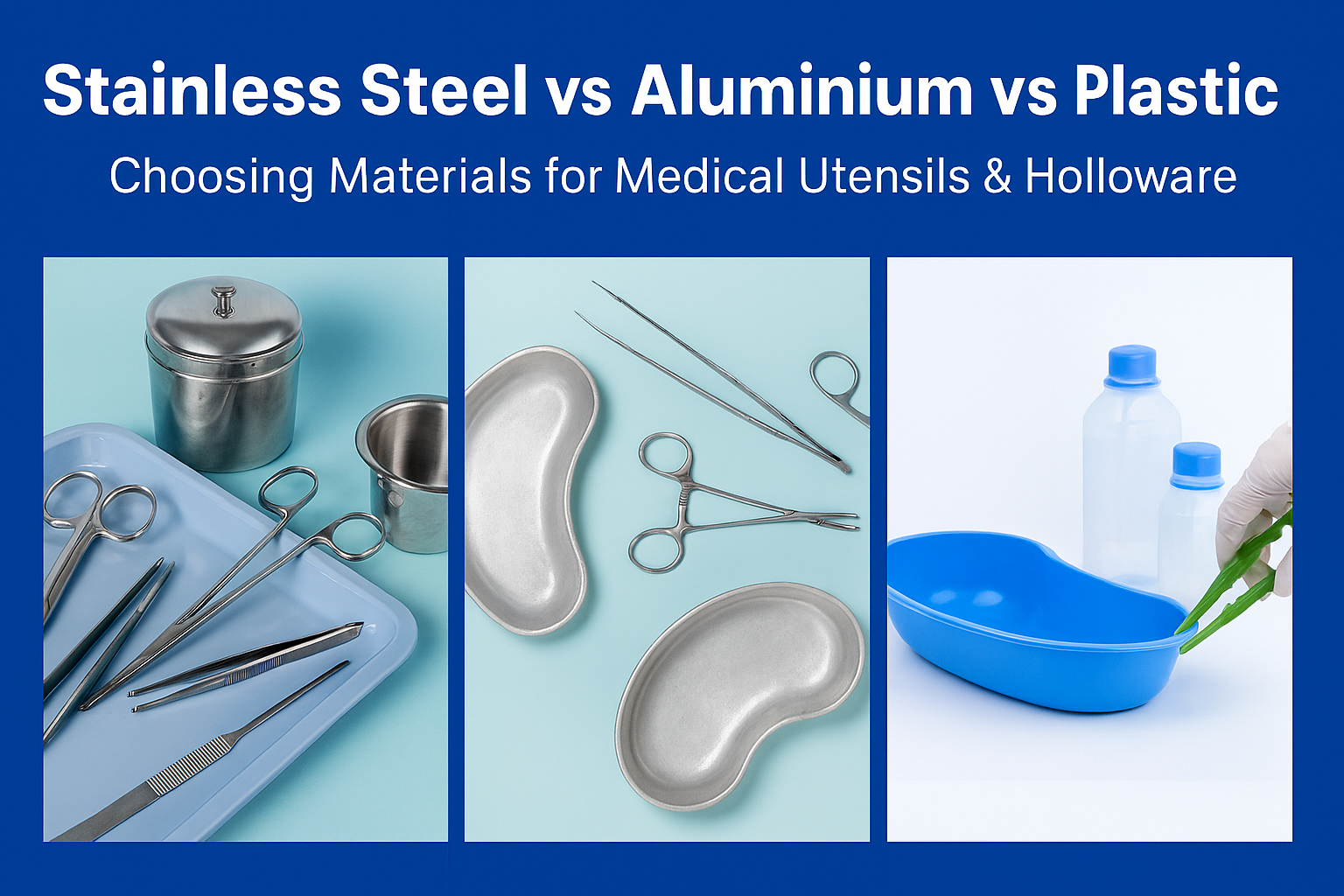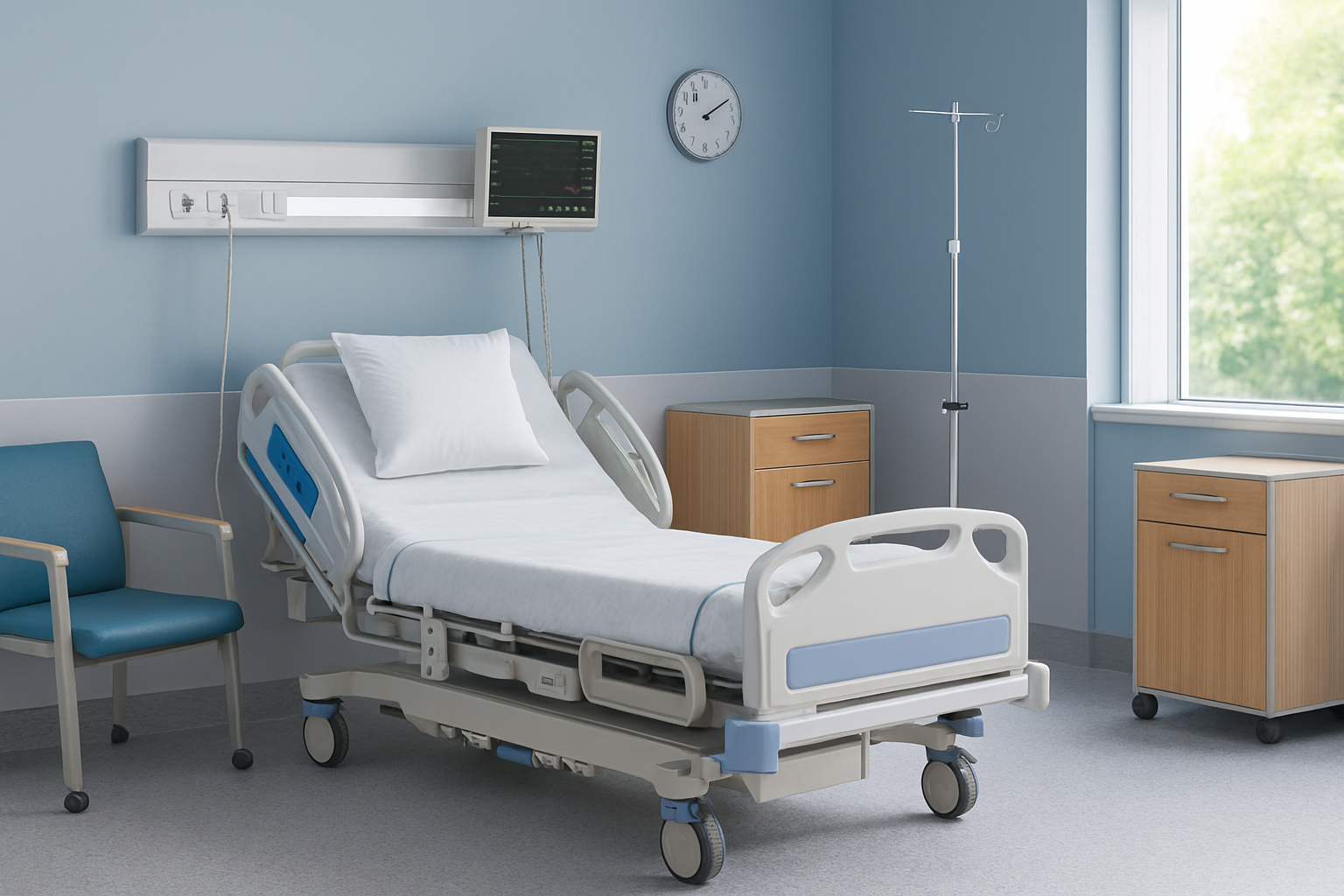In any healthcare facility, Hospital Stretchers are vital pieces of equipment. They are precisely crafted to facilitate the safe and proper movement of patients during surgeries, emergencies, diagnostics, and even during regular medical procedures.
Today, the stretchers have been adapted into more sophisticated tools tailored to meet different medical requirements. As such, it is best to consult with a specialized hospital furniture supplier for optimal and best stretchers for hospitals.
What are Hospital Stretchers?
A hospital stretcher, or patient trolley as it is also referred to, is medical transport equipment featuring a wheeled frame with a flat surface. With the aid of this device, patients who require assistance can be transported.
Most hospital stretchers are equipped with adjustable height, side rails, and mobility features, which ensure the patient’s comfort and safety.
Knowing the different types of hospital stretchers and their functions is useful in choosing the right one for particular medical settings. Here are the most popular stretchers in every medical facility.
Types of Hospital Stretchers
- Emergency Stretchers: Paramedics and emergency departments use these stretchers for quick patient transport. They have oxygen tank holders, shock-absorbing frames, adjustable backrests, and wheels that can be locked. These stretchers are made for environments that require the quick transportation of patients.
- Hydraulic Stretchers: These have a hydraulic system for easier height and positioning adjustments. They can also be effortlessly raised to assist with patient care. With side rails, these bariatric stretchers offer additional stability. Such stretchers are suitable for operating rooms, intensive care units, and trauma centres.
- Radiographic Stretchers: Patients do not need to be moved from the stretcher for x-ray imaging; as such, these stretchers integrate the functionality. With radiolucent platforms and x-ray cassette holders, these stretchers also have side access for imaging equipment, which makes them popular in diagnostic imaging departments.
- Transport Stretchers: These stretchers are meant to aid in the movement of the patient within the hospital. They have a lightweight frame, are easy to maneuver, and are equipped with adjustable footrests to accommodate taller patients.
What are the key uses of Hospital Stretchers?
- Emergency Response and Trauma Care
- Surgical Procedures
- Diagnostic Imaging
- Patient Transfers
- Long-Term or Bariatric Care
Safety Guidelines for Using Medical Stretcher
Safety measures are of utmost importance when using hospital stretchers. Staff and healthcare personnel must adhere to a set of rules to prevent mishaps and ensure efficient patient handling.
- Check that wheels are locked: Always confirm that the wheels are locked. Ensure all the wheels are locked before performing any procedures or transferring a patient. This is to prevent unintended movement.
- Correct Use of Side Rails: Maintain raised side rails during patient transportation to prevent falling. Healthcare personnel must lower the rails fully when the patient is transferred with full support.
- Security of Patient: The safety belts or straps are to be used, especially when moving the patients, to stabilise them and prevent falls.
- Avoid Overloading: The Stretcher weight limit should be observed and not exceeded. Stretchers designed for bariatric patients should be used for obese patients.
- Adjust Height: Use electric or hydraulic controls to adjust the height of the stretchers to a comfortable working height for caregivers, reducing strain and injury risk.
- Routine Maintenance and Check: Stretchers need to be cleaned and disinfected after every use to ensure hygiene. Routinely, stretchers should be checked for mechanical faults and wear.
Adhering to the stretcher safety tips above will aid hospitals in delivering optimal care and safety for the patients.
Why do the Hospital Stretchers of the best hospital furniture manufacturers stand out?
- Industrial–Grade Quality: Reliable manufacturers have quality-grade certifications verifying that they meet the rigorous standards during the production process. Their in-house development and tooling capabilities ensure consistent output as well as agile responsiveness to modern shifts in healthcare facilities. They have strict quality control in place, ensuring medical furniture is flawless.
- Superb Construction Details: The dedicated hospital furniture manufacturers always incorporate first-rate stainless steel, aluminium and ABS plastics into their stretchers and other devices to guarantee resistance to corrosion, and durability to ensure longevity through time.
- Cutting-Edge Safety Measures: To protect patients throughout transportation, the stretchers are fitted with safety belts, collapsible side rails, central locks, and anti-skid wheels.
- Custom Functionality: The well-known exporters and suppliers of hospital furniture provide several variants such as radiographic, emergency and even bariatric stretchers designed for specific hospital departments.
- Compliance with International Standards: The best manufacturers are certified for ISO, CE and FDA standards, ensuring hygiene, safety and performance aligned with global benchmarks.
- Innovative Features: Some stretchers come with oxygen cylinder holders, IV poles and even electric controls for advanced care settings.
- Easy to Maintain: The reputed manufacturers design the hospital stretchers with minimal joints and washable surfaces, ensuring easy and hassle-free cleaning.
What are Emergency Stretchers and their Types- Explained
Emergency stretchers are used in hospitals and clinics as patient transport devices designed specifically for acute medical conditions to quickly and safely transport patients. Emergency stretchers are specifically designed for speed, stability, and patient safety and are vital to ambulances, ERs and trauma units.
There are three basic types of emergency stretchers: standard emergency stretchers, folding stretchers, scoop stretchers, and basket stretchers.
Stretchers for hospitals are more than transport devices. The use of stretchers can help organize a hospital’s patient care operations regarding patient safety, care, and efficiency of care processes. Understanding the types of stretchers, what they can be used for, and guidelines for safe use helps any healthcare provider or team improve the quality and safety of the care they provide.
FAQs
- What is a stretcher used for in the hospital?
A stretcher is a device used in the hospital to safely transport patients who are injured, immobile or having a medical procedure done. United Poly makes the highest quality medical stretchers customized to the needs of the health care facility. - What is the difference between a stretcher and a gurney?
A stretcher is a flat surface used to transport the patient, while a gurney is a stretcher mounted on a wheeled frame for ease of mobility. - What is the difference between hospital manual v/s electric stretchers?
A manual stretcher requires physical effort to adjust height and position, while an electric stretcher uses motorized controls for easier and precise adjustment. United Poly offers the best quality manual and electric stretchers that are long-lasting, adhere to medical safety norms and affordable.






